List of all original Apple-1.
If you are a first time visitor and not familiar with iconic Apple-1 computers, please read all the information first.
Go to previous entry #13 - Go to next entry #15
Note: This is the 14th entry in the list, and not the 14th Apple-1 produced. The Apple-1 does not have a regular serial number. Only some Apple-1 have a handwritten serial number.
 Apple-1 #14 "Dryden", 1st batch, serial number 01-0073
Apple-1 #14 "Dryden", 1st batch, serial number 01-0073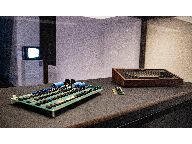 Apple-1 #14 "Dryden", 1st batch, serial number 01-0073
Apple-1 #14 "Dryden", 1st batch, serial number 01-0073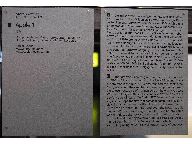 Apple-1 #14 "Dryden", 1st batch, serial number 01-0073
Apple-1 #14 "Dryden", 1st batch, serial number 01-0073 Apple-1 #14 "Dryden", 1st batch, serial number 01-0073
Apple-1 #14 "Dryden", 1st batch, serial number 01-0073 Apple-1 #14 "Dryden", 1st batch, serial number 01-0073
Apple-1 #14 "Dryden", 1st batch, serial number 01-0073 Apple-1 #14 "Dryden", 1st batch, serial number 01-0073
Apple-1 #14 "Dryden", 1st batch, serial number 01-0073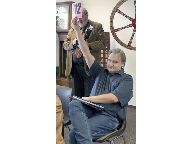 Apple-1 #14 "Dryden", 1st batch, serial number 01-0073
Apple-1 #14 "Dryden", 1st batch, serial number 01-0073 Apple-1 #14 "Dryden", 1st batch, serial number 01-0073
Apple-1 #14 "Dryden", 1st batch, serial number 01-0073 Apple-1 #14 "Dryden", 1st batch, serial number 01-0073
Apple-1 #14 "Dryden", 1st batch, serial number 01-0073 Apple-1 #14 "Dryden", 1st batch, serial number 01-0073
Apple-1 #14 "Dryden", 1st batch, serial number 01-0073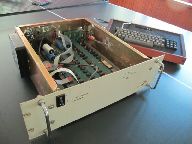 Apple-1 #14 "Dryden", 1st batch, serial number 01-0073
Apple-1 #14 "Dryden", 1st batch, serial number 01-0073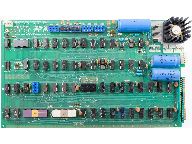 Apple-1 #14 "Dryden", 1st batch, serial number 01-0073
Apple-1 #14 "Dryden", 1st batch, serial number 01-0073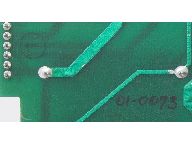 Apple-1 #14 "Dryden", 1st batch, serial number 01-0073
Apple-1 #14 "Dryden", 1st batch, serial number 01-0073 Apple-1 #14 "Dryden", 1st batch, serial number 01-0073
Apple-1 #14 "Dryden", 1st batch, serial number 01-0073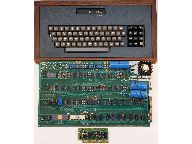 Apple-1 #14 "Dryden", 1st batch, serial number 01-0073
Apple-1 #14 "Dryden", 1st batch, serial number 01-0073 Apple-1 #14 "Dryden", 1st batch, serial number 01-0073
Apple-1 #14 "Dryden", 1st batch, serial number 01-0073 Apple-1 #14 "Dryden", 1st batch, serial number 01-0073
Apple-1 #14 "Dryden", 1st batch, serial number 01-0073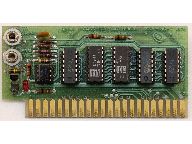 Apple-1 #14 "Dryden", 1st batch, serial number 01-0073
Apple-1 #14 "Dryden", 1st batch, serial number 01-0073 Apple-1 #14 "Dryden", 1st batch, serial number 01-0073
Apple-1 #14 "Dryden", 1st batch, serial number 01-0073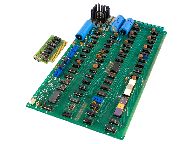 Apple-1 #14 "Dryden", 1st batch, serial number 01-0073
Apple-1 #14 "Dryden", 1st batch, serial number 01-0073 Apple-1 #14 "Dryden", 1st batch, serial number 01-0073
Apple-1 #14 "Dryden", 1st batch, serial number 01-0073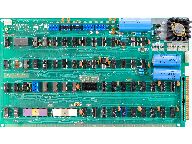 Apple-1 #14 "Dryden", 1st batch, serial number 01-0073
Apple-1 #14 "Dryden", 1st batch, serial number 01-0073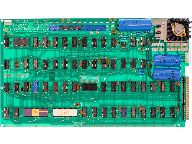 Apple-1 #14 "Dryden", 1st batch, serial number 01-0073
Apple-1 #14 "Dryden", 1st batch, serial number 01-0073 Apple-1 #14 "Dryden", 1st batch, serial number 01-0073
Apple-1 #14 "Dryden", 1st batch, serial number 01-0073 Apple-1 #14 "Dryden", 1st batch, serial number 01-0073
Apple-1 #14 "Dryden", 1st batch, serial number 01-0073 Apple-1 #14 "Dryden", 1st batch, serial number 01-0073
Apple-1 #14 "Dryden", 1st batch, serial number 01-0073 Apple-1 #14 "Dryden", 1st batch, serial number 01-0073
Apple-1 #14 "Dryden", 1st batch, serial number 01-0073
 Achim Baqué
Achim BaquéA forensic analysis confirms that the serial number on the back of this Apple-1 is in Steve Jobs' handwriting. More information.
TheApple-1.com (owner website)
This Apple-1 was built into a 19-inch rack. It is the only known Apple-1 in a rack. The keyboard is built into a beautiful wooden case. The owner used the prototype area for its intended purpose: to modify the Apple-1 slightly.
Handwritten number 01-0073 and a round stamp with number 7 in the middle are on the back.
The added components (inverter ICs) were necessary to use some keyboards in 1976. Many Apple-1s were modified for auctions in the past. Those added parts were removed, and a 1977 or even later Apple II keyboard was attached. The Dryden Apple-1 is still in its 1976 state, including the keyboard. Not everyone agrees that it is worth destroying the history of the Apple-1 mainboard and removing 1976 parts necessary to use some 1976 keyboards just to make the mainboard look “clean” and add much later-produced keyboards.
Bought by John Dryden (California) on Nov 30, 1976, in a small computer shop in Berkeley called Kentucky Fried Computers. Later, this company became North Star Computers.
Apple offered Apple-1 owners in 1977 to trade in their Apple-1 for an Apple II. In 1979, John Dryden tried to do so, but Apple responded that they had no information about a trade-in.
The Apple-1 was kept by the first owner until 2017, when it was auctioned by Breker Cologne in Germany. Expert Rudolf Brandstötter checked the Apple-1 and added another keyboard and a new power supply for 'daily use.' The original keyboard is still untouched in the wooden case. The original power supply exists but is too risky to use. The new owner is Achim Baqué from Germany.
Surprisingly, the low auction result had nothing to do with the Apple-1, and the owner knows the reason but can't talk about it. After the auction, US\$ 350,000 was offered twice but not accepted by the current owner.
This Apple-1 was on display for 7 months at an art exhibition in Karlsruhe, Germany. From July 14, 2018, till February 10, 2019, at ZKM, Center for Art and Media, Lorenzstraße 19, 76135 Karlsruhe. [www.zkm.de](http://www.zkm.de) – use an online translator. The Apple-1 was provided free of charge for the exhibition.
The exhibition was called „Kunst in Bewegung. 100 Meisterwerke mit und durch Medien.“ (Art in Motion. 100 Masterpieces with and through Media).
The Apple-1 is still in its 1976 state. The first owner added some parts and replaced 2 sockets. The current owner believes that after 40+ years, it is part of the history and belongs to the mainboard. He preserves this state. No cleaning was done, and that’s how every museum likes/wants it!
May 2016
(see History for more information)
White ceramic MOS MCS 6502 CPU (1576), purple ceramic Motorola MC6820L PIA (7636), 8 KB plastic DRAM, original components. Blue capacitors.
Original Apple Cassette Interface. Unique 19-inch rack. Keyboard in a unique wooden case. Cassettes, original Operation Manual, original ACI manual, cassette recorder, and a typewritten preliminary manual. Sanyo monitor. Unique letter from Apple Company dated April 2, 1979, and signed by Carol Sandler. Original bill from Nov 30, 1976. Many handwritten documents. Some notes of phone calls between the owner and Steve Wozniak. And more.
Very good. Prototype area populated with additional electronics. Additional wires on the back. All hardware was added in the prototype area by first-hand owner John Dryden in 1976/1977 because he used a keyboard with inverted signals. The extra chips are inverters. Works with a 'regular' serial keyboard as well. The same owner replaced two IC sockets.
The current owner decided to preserve the history and changes made by the first owner soon after buying the Apple-1. All added parts are in place; no chips have been changed, etc.
In 2018 current owner Achim Baqué asked John Dryden about the Apple-1. Thankfully John answered the questions in great detail. It completes the history and provenance of this Apple-1.
For what did you use the Apple-1? For fun, education or any other purpose?
I was a software engineer and as a hobby I liked to play with electronics. I bought the Apple-1 to experiment with because I finally had the chance to own my own computer. I wrote a text editor program for it in 6502 assembly language, which I had to assemble by hand, and then key into the Apple-1 monitor program a byte at a time. I sent an article about the editor to (the newly established) Byte Magazine but they never printed it. I had a few phone conversations with folks at Apple about the editor but they had their own editor in the works and they liked theirs better because it had more "bells and whistles," as I wrote in my handwritten notes, which you [Achim] have. I also built a hardware interface and wrote a driver for an IBM Selectric typewriter, which I used as a printer. Along with friends, we had plans to build a software-driven patch-cord switching network for the audio synthesizer that one of us owned. We all went our separate ways before the project was complete.
What is the purpose of the added chips on the mainboard?
The keyboard I used produced inverted signals as compared to the signals expected by the motherboard. The extra chips are inverters.
Why did you buy the Apple-1 in Nov 1976 and not any other computer?
I looked at other personal computers that were coming out at about the same time, but I liked the Apple better because it uses a 6502 microprocessor, which I felt was superior to the 8080 used on most other machines.
You bought it in the Byte Shop in the Bay Area?
No, I bought it at a small place in Berkeley called Kentucky Fried Computers. You [Achim] have the receipt. It was a lot of money for a poor hippie in Berkeley, but I really liked the idea of a computer that I could own and program for myself.
Jul 29, 2025
Mar 26, 2018: 3 picture(s) added
Mar 31, 2018: 1 picture(s) added
Jun 21, 2018: Location. On display status. Geo location. Geo description. State. Description. History, 5 picture(s) added
Jul 17, 2018: 2 picture(s) added
Jul 17, 2018: History
Oct 06, 2018: History
Dec 07, 2018: Auctions added
Feb 15, 2019: On display status
Feb 15, 2019: Geo description
Feb 15, 2019: Geo location added
May 23, 2019: Location
May 27, 2019: Number/Sticker/Stamp info
Jun 13, 2019: History
Jun 25, 2019: Website(s)
Jul 25, 2019: 2 picture(s) added
Nov 01, 2021: Website(s)
Nov 14, 2021: 1 picture(s) added
Nov 15, 2021: Equipment
Nov 15, 2021: Description of picture(s)/video(s)
Nov 16, 2021: Working condition
Nov 16, 2021: Serial number. Labels / stamps added
Nov 20, 2021: 3 picture(s) added
Feb 09, 2022: Verification status
Apr 16, 2022: 4 picture(s) added
Apr 16, 2022: 3 picture(s) added
Jul 29, 2025: State. Equipment. Description. History
We appreciate your help:
Please spread the word about the Apple-1 Registry by adding a link to your social media account and/or website. Contact us if you have new information about any Apple-1 or Apple-1 (parts) for sale.
You can link to the Apple-1 Registry. Any form of reprint or reproduction (including excerpts) is only allowed with written permission from the Apple-1 Registry.
Here you will find press releases and images free to use under CC BY-SA 4.0.